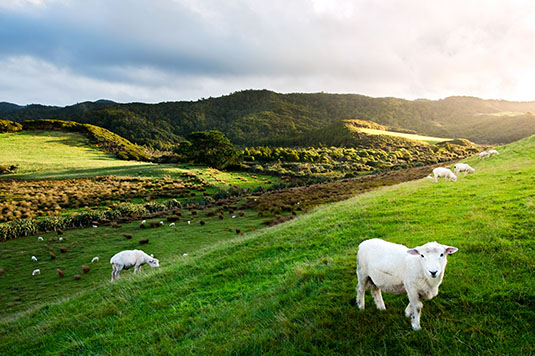Linking biodiversity research to farmers
The amount of native plant species on New Zealand farms could be hugely boosted if a new initiative by Beef + Lamb New Zealand (B+LNZ) gets off the ground.

B+LNZ is encouraging all Aotearoa sheep and beef farmers to include biodiversity in their Land Environment Plans by 2021, a kaupapa (initiative) that aligns perfectly with the goals of BioHeritage’s Farming & Nature Conservation team.
This is part of B+LNZ’s environment strategy launched earlier this year that has set the objective of thriving biodiversity and for sheep and beef farms to provide habitats that support biodiversity and protect our native species.
Last month, B+LNZ met with the Farming & Nature Conservation team, iwi and farmers to lay the foundations for a biodiversity framework that could be used to support New Zealand’s 12,500 sheep and beef farmers to boost the amount of native species on their land.
Farming & Nature Conservation works with rural communities to help improve biodiversity on farms in a way that benefits both native species and the farm business. They’re a natural fit for B+LNZ that’s working towards improving the breadth and depth of on-farm biodiversity.
“We’ve always felt that we can do all this biodiversity research but, if we’re not getting it across to the farmers, it’s a complete and utter waste of time,” says BioHeritage project co-leader Professor David Norton, from the University of Canterbury.
The next step for the Farming & Nature Conservation team is to evaluate current biodiversity resources available to farmers and how best to include biodiversity in Land Environment Plans. That can help determine ways of working with rural communities at farm, landscape and catchment scales to improve the resilience of farms and the health of the environment.
Sheep and beef farmer Ben Ensor said he’s yet to meet a farmer who doesn’t care about biodiversity. However, many lack the species-specific knowledge of what’s special, why it should be valued and how best to manage it.
B+LNZ senior capability and Māori agribusiness manager Doug Macredie says some species have an automatic “wow factor”, like kākā. He says these could be used as a starting point to look at ways of raising awareness of the less conspicuous species.
Those at the meeting discussed a range of topics, including biodiversity baselines, obstacles, incentives, and ways to measure biodiversity on farms. Carbon storage was another hot topic, with it being identified as intimately linked with biodiversity.
Ngāti Mākino Iwi Authority general manager Dr Kēpa Morgan introduced the group to the concept of using mauri to measure different world views and track sustainability over time.
He explained that the mauri model could be useful for showing different realities experienced by respective worldviews, and how subsequent priorities can result in different outcomes for the environment and community.